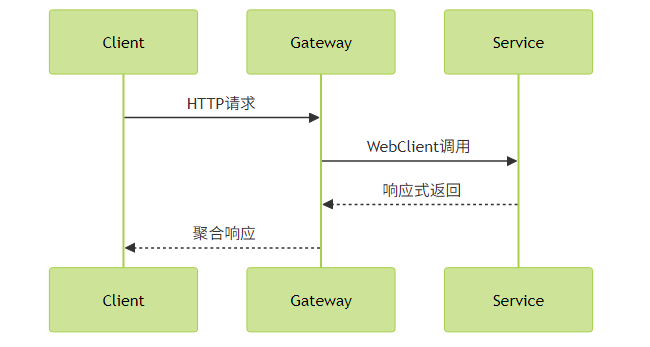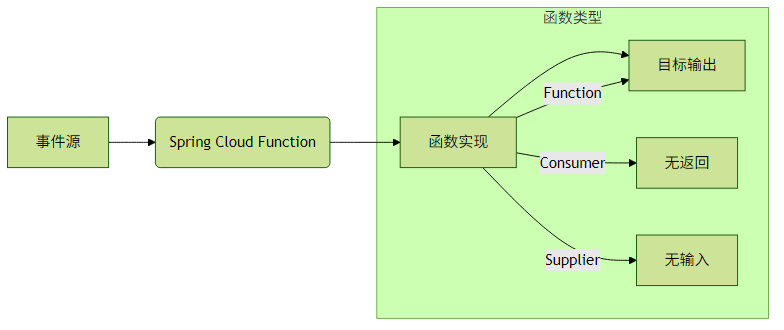Spring Cloud响应式编程与Serverless实战
Spring Cloud高级特性实战:响应式编程与Serverless架构
一、响应式编程支持
1. WebFlux核心原理
Spring WebFlux是Spring 5引入的非阻塞式响应式编程框架,基于Reactor库实现。其核心特点是:
- 基于Reactive Streams规范
- 使用Netty作为默认服务器
- 支持背压(Backpressure)机制
- 函数式编程模型
@RestController
@RequestMapping("/reactive")
public class ReactiveController {
@GetMapping("/hello")
public Mono<String> hello() {
return Mono.just("Hello, WebFlux!")
.delayElement(Duration.ofMillis(100));
}
}实践建议:
- 适合高并发、低延迟场景
- 避免在响应式链中执行阻塞操作
- 合理设置背压策略
2. Reactive服务调用模式
Spring Cloud Gateway + WebClient组合

WebClient基础用法:
WebClient client = WebClient.builder()
.baseUrl("http://service-provider")
.build();
Mono<User> userMono = client.get()
.uri("/users/{id}", userId)
.retrieve()
.bodyToMono(User.class);性能优化技巧:
- 启用连接池:
.clientConnector(new ReactorClientHttpConnector(HttpClient.create().tcpConfiguration(...))) - 设置超时:
.timeout(Duration.ofSeconds(3)) - 启用重试:
.retryWhen(Retry.backoff(3, Duration.ofMillis(100)))
二、多租户与SaaS支持
1. 租户隔离策略对比
| 策略类型 | 实现方式 | 优点 | 缺点 |
|---|---|---|---|
| 数据库级隔离 | 不同租户使用不同数据库 | 完全隔离,安全性高 | 运维成本高 |
| Schema级隔离 | 同一数据库不同schema | 资源利用率高 | 需要数据库支持 |
| 数据行级隔离 | 表中增加tenant_id字段 | 实现简单 | 需要应用层过滤 |
| 共享表隔离 | 所有数据混存,逻辑隔离 | 资源利用率最高 | 安全性最低 |
2. 动态数据源实现示例
public class TenantAwareRoutingDataSource extends AbstractRoutingDataSource {
@Override
protected Object determineCurrentLookupKey() {
return TenantContext.getCurrentTenant();
}
}
// 使用AOP拦截租户标识
@Aspect
@Component
public class TenantAspect {
@Before("@within(org.springframework.web.bind.annotation.RestController) || @annotation(org.springframework.web.bind.annotation.RestController)")
public void beforeController(JoinPoint joinPoint) {
HttpServletRequest request = ((ServletRequestAttributes) RequestContextHolder.getRequestAttributes()).getRequest();
String tenantId = request.getHeader("X-Tenant-ID");
TenantContext.setCurrentTenant(tenantId);
}
}最佳实践:
- 租户标识建议放在HTTP头(X-Tenant-ID)
- 使用ThreadLocal存储当前租户上下文
- 清理线程上下文避免内存泄漏
三、Serverless集成
1. Spring Cloud Function核心概念

2. AWS Lambda集成示例
// 函数定义
@Bean
public Function<String, String> uppercase() {
return value -> value.toUpperCase();
}
// 部署配置(application.yml)
spring:
cloud:
function:
definition: uppercase
aws:
credentials:
access-key: ${AWS_ACCESS_KEY}
secret-key: ${AWS_SECRET_KEY}
region: us-east-1
lambda:
function:
name: myFunction生产建议:
- 保持函数无状态
- 控制函数包大小(<50MB)
- 合理设置超时时间
- 使用环境变量管理配置
3. 函数组合与流处理
@Bean
public Function<Flux<String>, Flux<String>> wordCount() {
return flux -> flux.flatMap(sentence ->
Flux.fromArray(sentence.split("\\s+")))
.map(word -> Tuple2.of(word, 1))
.groupBy(Tuple2::getT1)
.flatMap(group -> group.reduce((a, b) ->
Tuple2.of(a.getT1(), a.getT2() + b.getT2())))
.map(tuple -> tuple.getT1() + ": " + tuple.getT2());
}四、性能优化实战
响应式服务调优参数
# application.yml优化配置示例
spring:
cloud:
gateway:
httpclient:
pool:
max-connections: 1000
max-idle-time: 30000
loadbalancer:
configurations: zone-preference
server:
netty:
leak-detection: PARANOID
selector-threads: 4
worker-threads: 16监控指标:
reactor.netty.http.client.connections.activereactor.netty.http.server.requests.activespring.cloud.gateway.requests
五、常见问题解决方案
响应式链阻塞问题
- 症状:
block()/blockFirst()/blockLast()调用 - 解决:使用
subscribeOn(Schedulers.boundedElastic())
- 症状:
内存泄漏排查
- 检查未释放的Mono/Flux
- 使用
Hooks.onOperatorDebug()定位问题
跨租户数据污染
- 实现
TenantFilter确保请求头处理 - 定期审计数据库访问日志
- 实现
冷启动延迟
- 使用Provisioned Concurrency
- 减小函数包体积
结语
Spring Cloud的高级特性为构建现代化云原生应用提供了强大支持。响应式编程能够显著提升系统吞吐量,多租户架构是实现SaaS化的关键技术,而Serverless则让开发者更聚焦业务逻辑。在实际应用中,建议:
- 渐进式采用新技术,先在小范围验证
- 建立完善的监控体系,特别是响应式应用的指标
- 定期进行压力测试,验证多租户隔离效果
- 函数计算适合事件驱动和突发流量场景
随着云原生技术的不断发展,这些高级特性将成为微服务架构的标准配置,掌握它们将大大提升架构能力和系统性能。